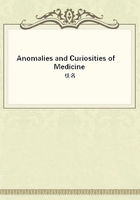
第422章
Inoculation was known in Europe about 1700, and in 1717 the famous letter of Lady Montagu from Adrianople was issued, containing in part the following statements:--"The small-pox, so fatal and so general amongst us, is here entirely harmless, by the invention of ingrafting, which is the term they give it. There is a set of old women who make it their business to perform the operation every autumn in the month of September, when the great heat is abated. People send to one another to know if any of their family has a mind to have the small-pox; they make parties for this purpose, and when they are met, the old woman comes with a nut-shell full of the matter of the best sort of small-pox, and asks what vein you please to have opened. She immediately rips open that you offer her with a large needle, and puts into the vein as much matter as can lie upon the head of her needle, and after that binds up the little wound with a hollow shell, and in this manner opens four or five veins."Soon after this letter Lady Montagu had her son inoculated in Turkey, and four years later her daughter was to be the first subject inoculated in England. She made rapid progress notwithstanding the opposition of the medical profession, and the ignorance and credulity of the public. The clergy vituperated her for the impiety of seeking to control the designs of Providence.
Preaching in 1722, the Rev. Edward Massey, for example, affirmed that Job's distemper was confluent small-pox, and that he had been inoculated by the Devil. Lady Montagu, however, gained many supporters among the higher classes. In 1721 Mead was requested by the Prince of Wales to superintend the inoculation of some condemned criminals, the Prince intending afterward to continue the practice in his own family; the experiment was entirely successful, and the individuals on whom it was made afterward received their liberty (Adams).
According to Rohe, inoculation was introduced into this country in 1721 by Dr. Zabdiel Boylston of Boston, who had his attention directed to the practice by Cotton Mather, the eminent divine.
During 1721 and 1722 286 persons were inoculated by Boylston and others in Massachusetts, and six died. These fatal results rendered the practice unpopular, and at one time the inoculation hospital in Boston was closed by order of the Legislature. Toward the end of the century an inoculating hospital was again opened in that city.
Early in the eighteenth century inoculation was extensively practiced by Dr. Adam Thomson of Maryland, who was instrumental in spreading a knowledge of the practice throughout the Middle States.
Despite inoculation, as we have already seen, during the eighteenth century the mortality from small-pox increased. The disadvantage of inoculation was that the person inoculated was affected with a mild form of small-pox, which however, was contagious, and led to a virulent form in uninoculated persons.
As universal inoculation was manifestly impracticable, any half-way measure was decidedly disadvantageous, and it was not until vaccination from cow-pox was instituted that the first decided check on the ravages of small-pox was made.
Vaccination was almost solely due to the persistent efforts of Dr. Edward Jenner, a pupil of the celebrated John Hunter, born May 17, 1749.
In his comments on the life of Edward Jenner, Adams, in "The Healing Art," has graphically described his first efforts to institute vaccination, as follows: "To the ravages of small-pox, and the possibility of finding some preventive Jenner had long given his attention. It is likely enough that his thoughts were inclined in this direction by the remembrance of the sufferings inflicted upon himself by the process of inoculation. Through six weeks that process lingered. He was bled, purged, and put on a low diet, until 'this barbarism of human veterinary practice' had reduced him to a skeleton. He was then exposed to the contagion of the small-pox. Happily, he had but a mild attack; yet the disease itself and the inoculating operations, were probably the causes of the excessive sensitiveness which afflicted him through life.
"When Jenner was acting as a surgeon's articled pupil at Sudbury, a young countrywoman applied to him for advice. In her presence some chance allusion was made to the universal disease, on which she remarked: 'I shall never take it, for I have had the cow-pox.' The remark induced him to make inquiries; and he found that a pustular eruption, derived from infection, appeared on the hands of milkers, communicated from the teats of cows similarly disordered; this eruption was regarded as a safeguard against small-pox. The subject occupied his mind so much that he frequently mentioned it to John Hunter and the great surgeon occasionally alluded to it in his lectures, but never seems to have adopted Jenner's idea that it might suggest some efficacious substitute for inoculation. Jenner, however, continued his inquiries, and in 1780 he confided to his friend, Edward Gardner, his hope and prayer that it might be his work in life to extirpate smallpox by the mode of treatment now so familiar under the name of vaccination.
"At the meetings of the Alveston and Radborough Medical Clubs, of both of which Jenner was a member, he so frequently enlarged upon his favorite theme, and so repeatedly insisted upon the value of cow-pox as a prophylactic, that he was denounced as a nuisance, and in a jest it was even proposed that if the orator further sinned, he should then and there be expelled. Nowhere could the prophet find a disciple and enforce the lesson upon the ignorant;like most benefactors of mankind he had to do his work unaided.
Patiently and perseveringly he pushed forward his investigations.